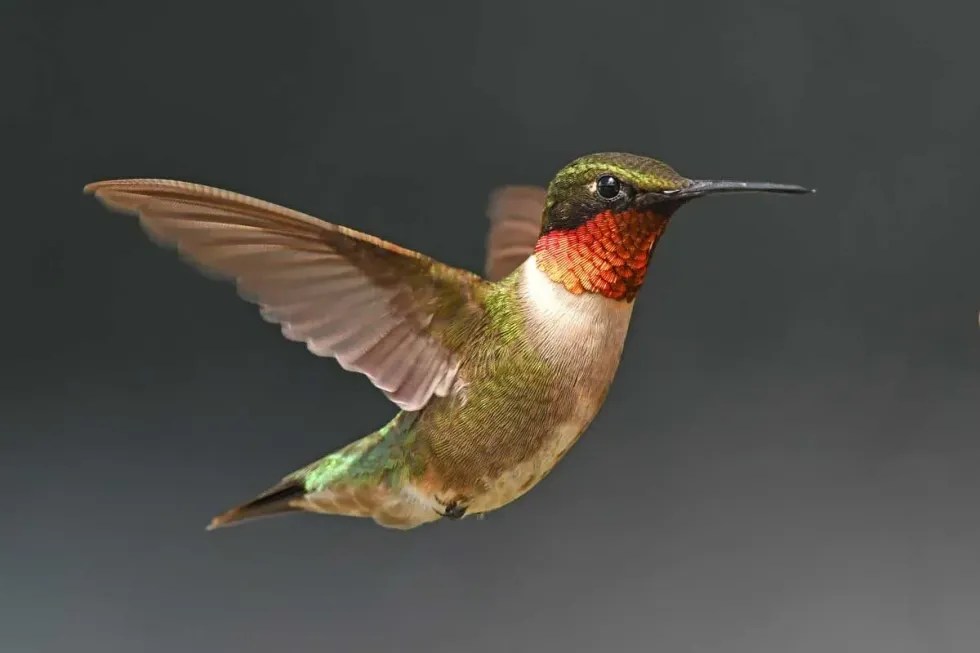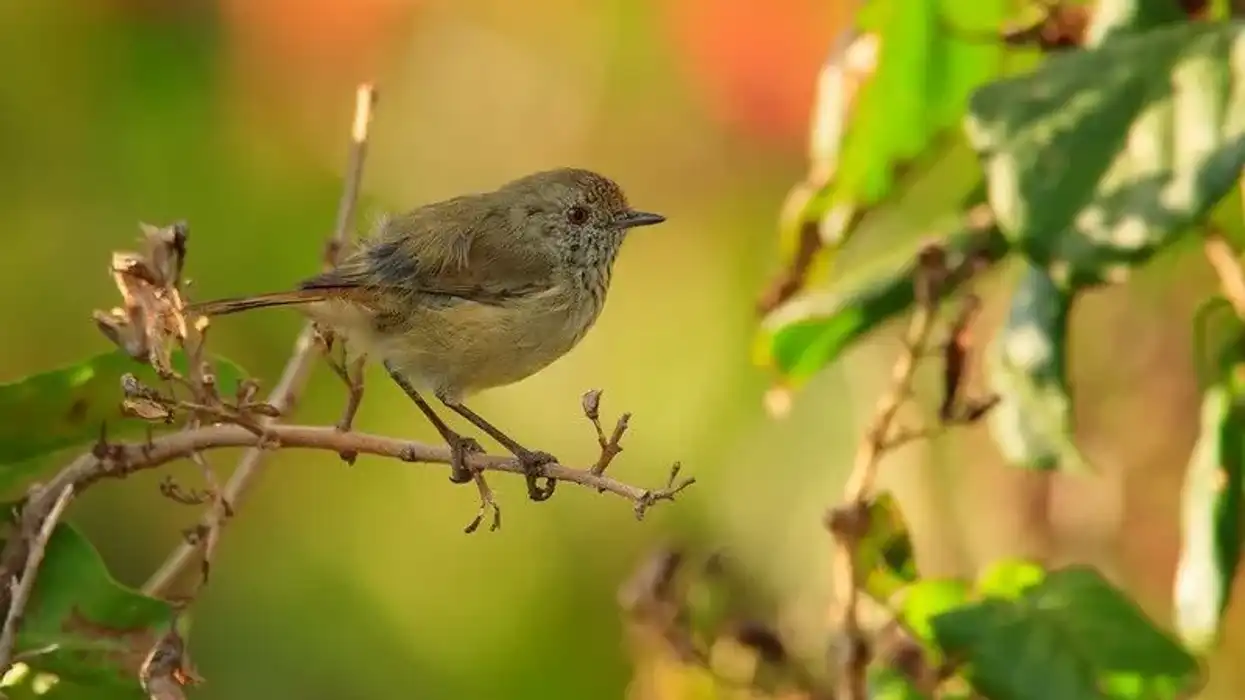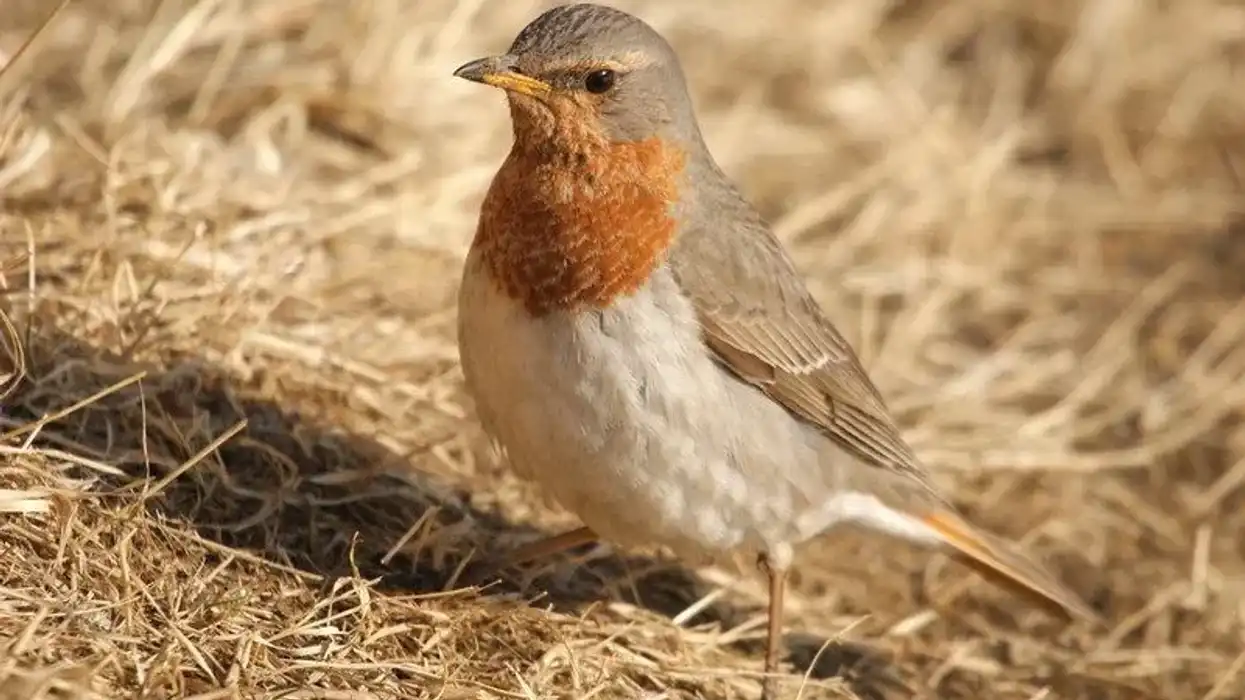The ruby-throated hummingbird (Archilochus colubris) is a hummingbird of the Trochilidae family. This adult hummingbird has a metallic green top and grayish-white underparts.
This bird is sometimes mistaken for a huge insect due to its small size. Nicholas Aylward Vigors, an Irish zoologist, introduced the Trochilidae family in 1825.
There are nine major clades in this family. This bird was first described by Carl Linnaeus, a Swedish naturalist, in 1758 and gave the name Trochilu colubris in his Systema Naturae. The specific name colubris is a derivation of the Spanish word Colibri, which means 'hummingbird.'
There are no subspecies recognized. Archilochus was the name of a Greek lyric poet around 650 BC from the island of Paros.
Currently, they are placed under the Archilochus genus, which was introduced by Ludwig Reichenbback, a German naturalist, in 1854. There are two migratory species in this genus, the ruby-throated hummingbird and the black-chinned hummingbird.
If you like these facts about the ruby-throated hummingbirds, make sure to check out the bee hummingbird and the rufous hummingbird.
Ruby-Throated Hummingbird Interesting Facts
What type of animal is a ruby-throated hummingbird?
The ruby-throated hummingbird (Archilochus colubris) is one of the small hummingbirds of the order Apodiformes and phylum Chordata. Other than courtship and mating, these birds are anti-social. The female and male ruby-throated hummingbird. They have great ability in flight due to their flight muscle and skeletal adaptations.
What class of animal does a ruby-throated hummingbird belong to?
The ruby-throated hummingbird (Archilochus colubris) belongs to class Aves of animals.
How many ruby-throated hummingbirds are there in the world?
The estimated population range of ruby-throated hummingbirds is around 7 million in the world.
Where does a ruby-throated hummingbird live?
Ruby-throated hummingbirds occupy Central America and Eastern North America. The breeding range of habitat is spread across the Eastern United States and southeastern and south-central Canada.
The wintering grounds of these species are southern Mexico, Florida, and Central America and extend to the West Indies and western Panama. Some of these birds make a 900 mi (1448 km) journey during migration across the Caribbean and Gulf of Mexico from Mexico or Panama through the Eastern United States.
What is a ruby-throated hummingbird's habitat?
The range of habitat of the ruby-throated hummingbirds includes pine forests, deciduous forests, orchards, broadleaved forests, forest edges, and gardens. These birds have the largest breeding range of all the American hummingbirds.
Who do ruby-throated hummingbirds live with?
These North American birds live on their own except in the breeding season.
How long does a ruby-throated hummingbird live?
The female ruby-throated hummingbird lives more than seven years, and the male ruby-throated hummingbird lives up to five years.
How do they reproduce?
Ruby-throated hummingbirds are believed to be polygynous and polyandrous. The female ruby-throated hummingbird species provide parental care, whereas the males departing after reproduction.
Before the females get to the breeding range, the males build a territory in the spring. Males perform courtship displays when females arrive. The 'dive display' involves the male raising to 8-10.2 ft (2.45-3.1 m) above and diving to 5-6 ft (1.52-1.82 m) next to the female.
If the female is receptive, she calls and solicits copulation by cocking her tail and drooping her wings. The nest is built on a downward-sloping tree at 10-40 ft (3.1-12.2 m). They mostly build the nest on hornbeam, birch, poplar, hackberry, and oak.
The nest is made of spider silk, plant down, animal hair, and lichen. They also might occupy old nest sites, which are annually repaired.
Females build the nest and take care of their eggs and young all on their own. The female lays two eggs.
They brood the young ones for 12-14 days till they are homeothermic and feathered. She feeds her young ones up to three times an hour. The chicks fly away from the nest around 18-22 days, making their first flight.
What is their conservation status?
The conservation status of ruby-throated hummingbirds is the Least Concern.
Ruby-Throated Hummingbird Fun Facts
What do ruby-throated hummingbirds look like?

The adult ruby-throated hummingbird species have a metallic green top, grayish-white underparts, and almost black wings. They have a slender, long, and straight bill that reaches up to 0.79 in (2 cm) in length.
They have small feet and toes. They only shuffle when they need to move along branches and can scratch their neck and head with their feet.
The adult male has an iridescent ruby with velvet black on the upper margin, and a red-bordered forget, and a forked black tail that has a violet sheen. The ruby-throated hummingbird female has a white throat that is sometimes lightly marked and notched tail with white, black, and green bands on the outer feathers.
Females do not have a red throat. Males have shorter bills compared to females.
Juveniles usually have heavy throat markings, and young males are identical to adult females. On the wintering grounds, they molt their feathers once a year that starts from early fall and ends in late winter.
How cute are they?
These tiny birds are considered cute.
How do they communicate?
The ruby-throats communicate through body language and vocalization. These birds have squeaky, rapid chirps. The male birds warn others with these calls if another male enters their territory. The males also produce continuos tik-tik sounds with their wings.
How big is a ruby-throated hummingbird?
The ruby-throats are 3-3.5 in (7.62-8.8 cm) in length. The male birds are smaller in size than the female birds. The wingspan is 3.1-4.3 in (8-11 cm).
How fast can a ruby-throated hummingbird fly?
These birds have flight abilities that are identical to insects that are also unique from other birds. The normal flight speed of these species is 25 mph (40 kph) and reaches up to 40 mph (64 kph) during courtship.
How much does a ruby-throated hummingbird weigh?
The body weight of these bird species is 0.004-0.013 lb (2-6 g).
What are the male and female names of the species?
There is no specific name given to the female and male ruby-throats.
What would you call a baby ruby-throated hummingbird?
There is no specific name given to the tiny baby ruby-throats.
What do they eat?
This North American bird feeds on nectar from flowering trees, flowers, small insects, and spiders. Their main source of protein and minerals is small anthropods. They prefer bright pink, red, or orange tubular flowers like the cardinal flower.
They also feed on trumpet creeper, saliva, jewelweed, bee balm, and thistle petunia. They also catch insects from flowers, barks, leaves, and spider webs. Young chicks feed mainly on insects.
Are they dangerous?
No, these North American birds are not dangerous.
Would they make a good pet?
No, they would not make a good pet. They are wild, migratory, birds and shouldn't be kept as pets.
Did you know...
Predators of the hummingbird include Mississippi kites, American kestrels, cats, loggerhead shrikes, and more.
The hummingbirds beat their wings 80 times per second.
The males have a high mortality rate due to loss of weight and energy demands while guarding their territory and migration.
Male vs. female ruby-throated hummingbirds
The adult male has an iridescent ruby with velvet black on the upper margin, and a red-bordered forget, and a forked black tail that has a violet sheen. The ruby-throated hummingbird female has a white throat that is sometimes lightly marked and notched tail with white, black, and green bands on the outer feathers.
Males have shorter bills compared to females.
Do ruby-throated hummingbirds migrate?
Yes, the ruby-throated hummingbird migration regions in summer include eastern North America and Canada. In winter, these hummingbirds migrate to Mexico, Florida, and Central America.
Here at Kidadl, we have carefully created lots of interesting family-friendly animal facts for everyone to discover! Learn more about some other birds from our Nicobar pigeon facts and macaw facts pages.
You can even occupy yourself at home by coloring one of our free printable Ruby throated hummingbird coloring pages.










